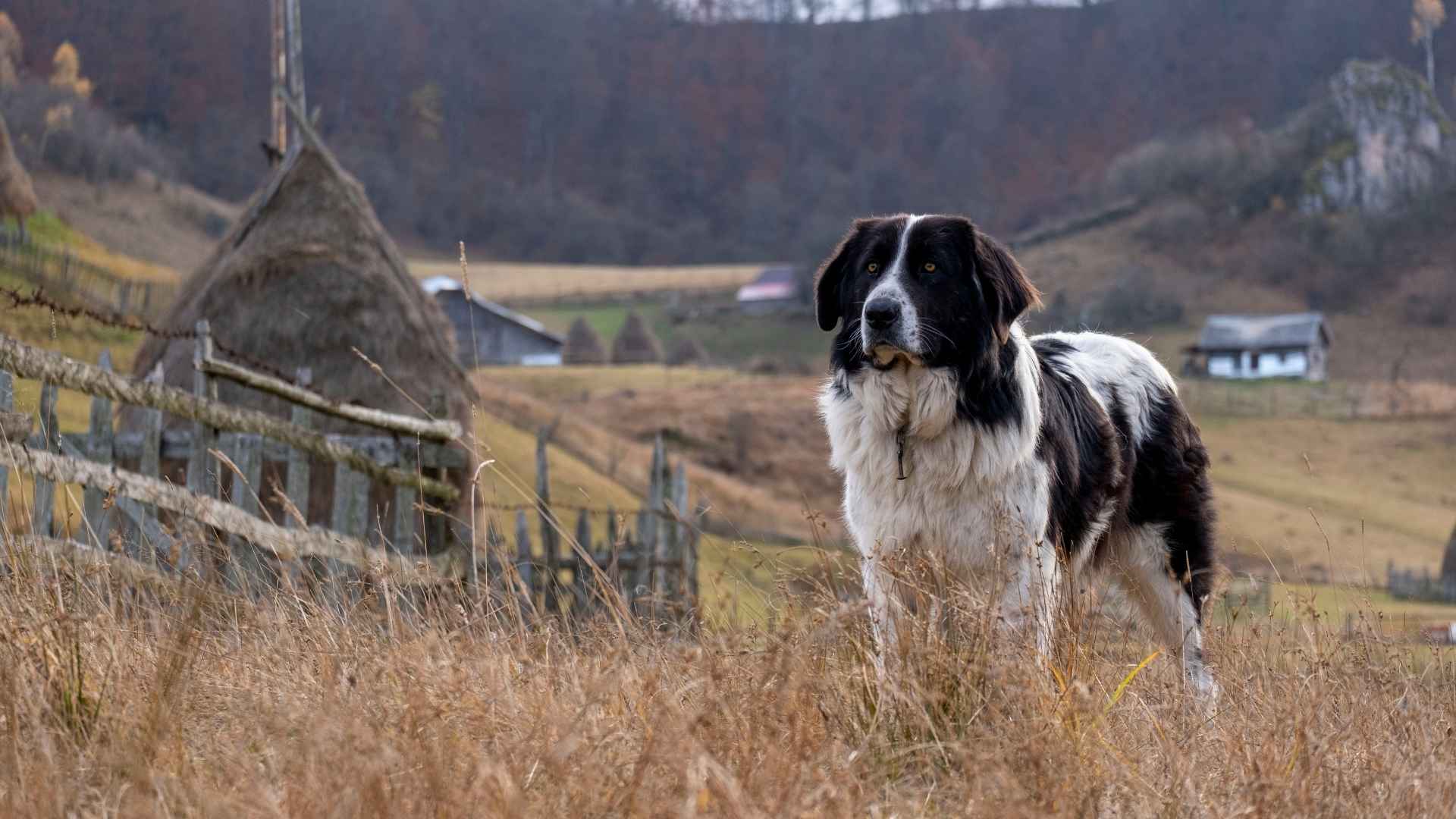With more people leaving cities and buying land in the countryside, one thing becomes clear fast: quiet comes with a cost.
Living on a remote property means more freedom, but also more risk. It’s not just about learning to grow your own food or fix your own roof. It’s about protecting what you build.
That’s where dogs come in—not just for their loyalty, but for their natural sense of territory. While some dogs are bred for companionship alone, others are bred to guard. They notice the change. They respond quickly. They become part of your land’s defense.
If you’ve joined the growing number of people choosing farmhouse life, your choice of dog matters. Below, you’ll find the breeds trusted by generations of farmers and homesteaders to keep things safe when no one else is near.
Guard Dog Breeds Perfect for Remote Farmhouses
1. Caucasian Shepherd
These dogs are known for taking initiative when guarding large areas without needing direction. They assess movement from a distance and position themselves with precision. It’s their decision-making under pressure that makes them valuable in isolated locations.
Built to Resist Pressure
A mature male can weigh over 170 pounds and hold ground even when challenged by large predators or intruders. Their thick coat protects against bites and harsh weather, allowing long hours outdoors. Their sheer size becomes a visual deterrent on open farmland.
Confidence with Boundaries
They don’t pace or overreact — they move with intent and confidence when territory is breached. This makes them ideal for spacious properties where controlled aggression is needed. With proper training, their judgment sharpens without becoming overly reactive.
Loyalty with Awareness
The Caucasian Shepherd bonds strongly with its household, often identifying who belongs and who doesn’t, as per the AKC. They’re highly alert to subtle behavior changes in visitors or animals. When raised right, they also develop patience around kids, making them dependable family dogs.
2. Kuvasz
The Kuvasz tracks movement across open spaces with precise focus and often holds a front-facing stance when threats are near. They are known to work quietly without external cues and stay alert even when livestock or family is asleep. This silent awareness makes them practical for large, unfenced land.
Strength That Matches Grit
With a strong bone structure and deep chest, the breed is built to confront risk instead of sidestepping it. Its body allows steady movement across rough terrain for extended periods. Many remote property owners still value its size and force when selecting a family guard dog.
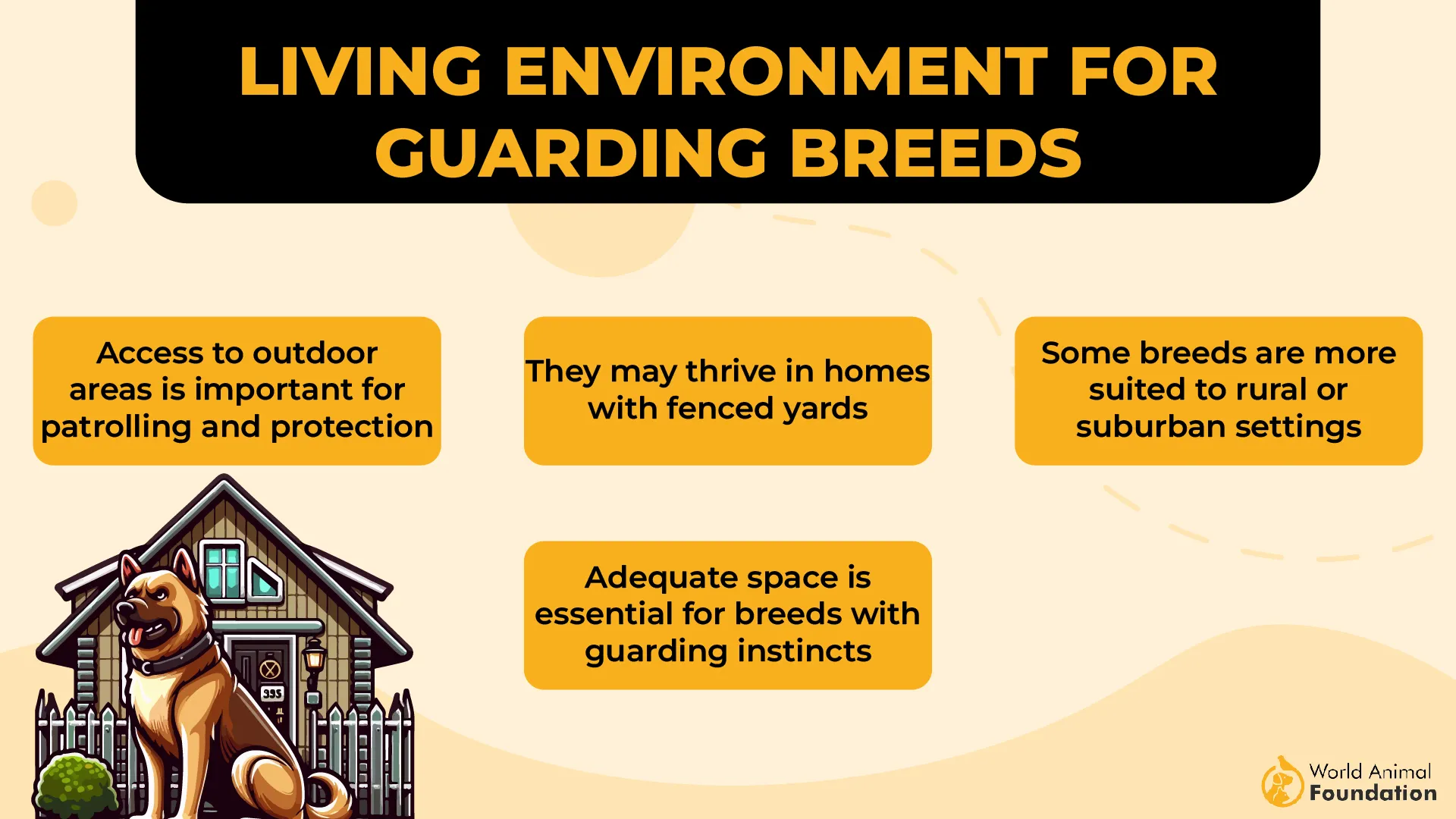
Judgement-Based Protection
These dogs do not rely on commands to identify risk; they read energy, movement, and patterns around them. This makes them ideal for places where the dog owner isn’t always close by. Their decision-making strengthens when raised with livestock or consistent routines.
Loyalty Without Clinginess
Kuvasz dogs attach deeply but maintain a reserved temperament, making them dependable yet self-sufficient. They are particularly useful where full-time human supervision isn’t possible. Though originally bred for livestock defense, they’ve proven effective at monitoring homes as well.
3. Komondor
The Komondor doesn’t rely on supervision to guard its territory and will often monitor the full property edge alone. It pays close attention to environmental patterns and intervenes when movement seems out of place. Their presence gives farmhouse owners added protection during quiet hours.
Physical Traits That Deter
A mature Komondor can weigh over 110 pounds and has thick cords that offer both insulation and bite resistance. The coat allows them to work outdoors without losing focus, even in colder climates. They blend into their surroundings when resting, often confusing trespassers and wild animals.
Focused Guarding Mentality
With a strong protective instinct, the Komondor isn’t easily distracted once its mind is set on threat assessment. It chooses whether to bark, block, or engage based on what it perceives, not what it’s told. This level of control makes them ideal livestock guardians in unpredictable areas.
Not Ideal for Beginners
This breed requires consistent socialization, firm structure, and an environment that matches their working drive. They aren’t a good fit for first-time dog handlers due to the level of leadership and space they demand. Without boundaries, their instincts can quickly take over.
4. Tibetan Mastiff
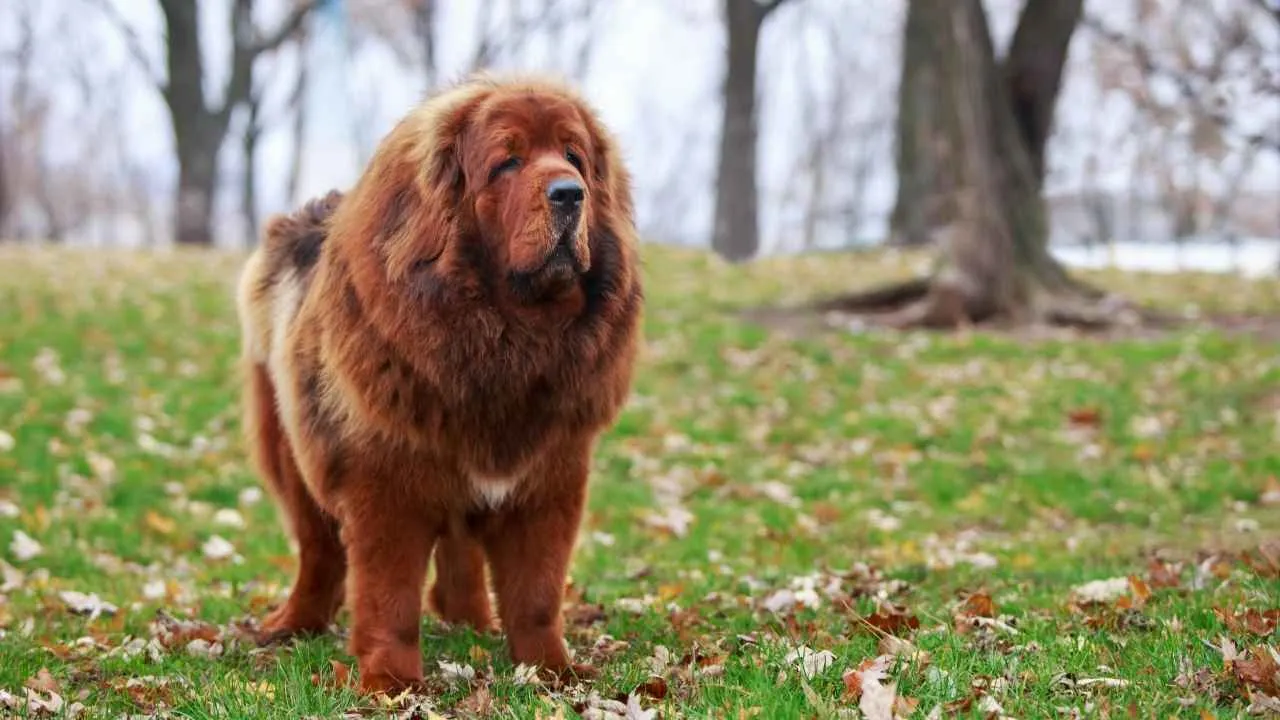
This breed guards with quiet intensity, often choosing to watch silently before making a move. Its protective nature becomes obvious the moment a boundary is tested. On rural land, it reacts confidently when movement appears in areas it considers off-limits.
Physical Presence and Stamina
With dense bone structure and a thick mane-like coat, it holds off threats even in freezing climates. Many mastiff breeds tire under pressure, but this one stays alert through long nights. It’s built for endurance in mountainous terrain and wide-open farmland.
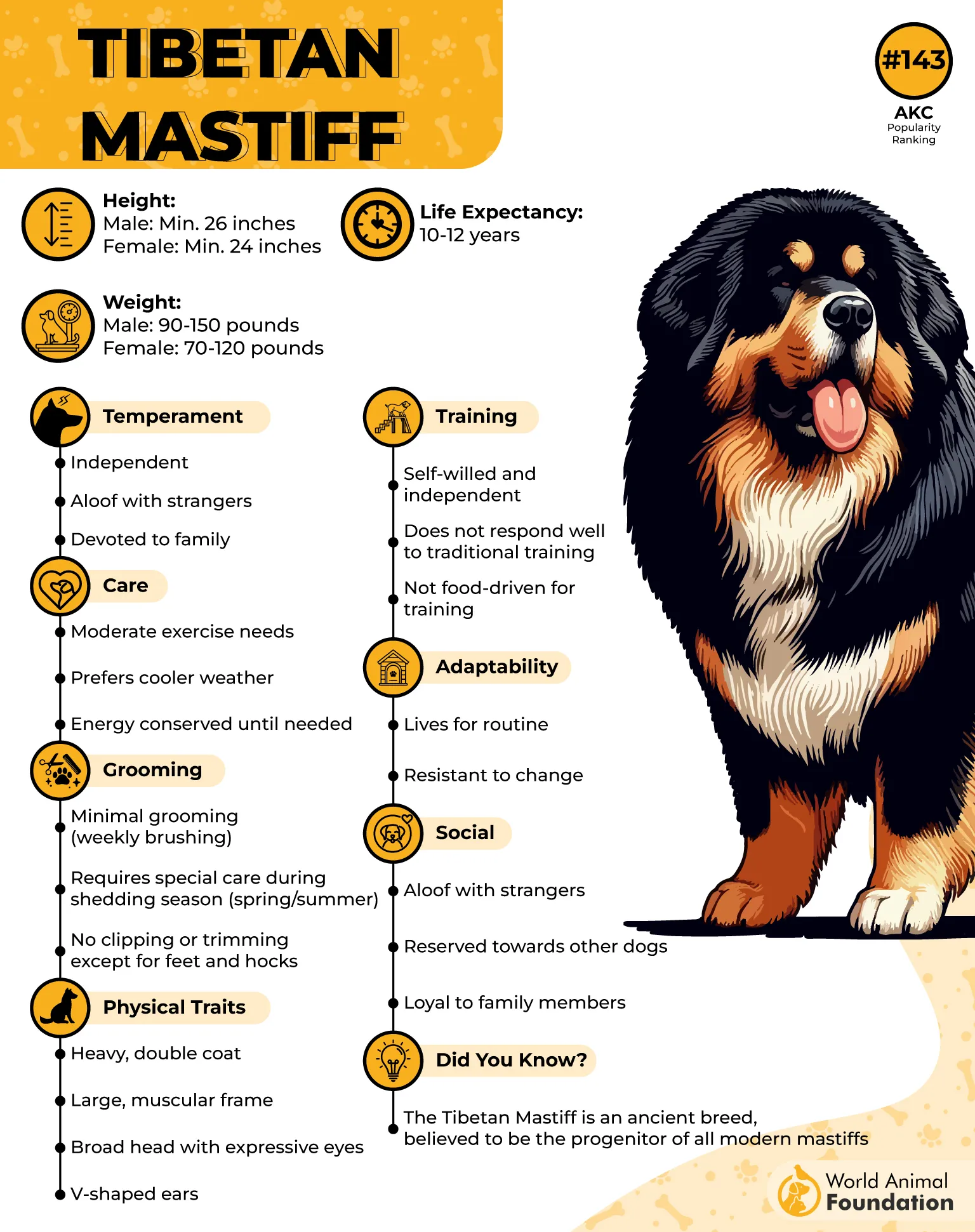
Training and Early Grounding
A Tibetan Mastiff responds best when rules are introduced at a young age in a firm but calm environment. Without consistent training, it may act on its own judgment more than needed. Setting limits early helps align its instincts with household expectations.
Reserved but Protective Nature
It doesn’t thrive in crowded environments or constant socialization with other dogs. However, when raised in a steady environment, they can form reliable bonds as family pets. Its reserved energy makes it ideal for owners seeking peace and perimeter control.
5. Kangal
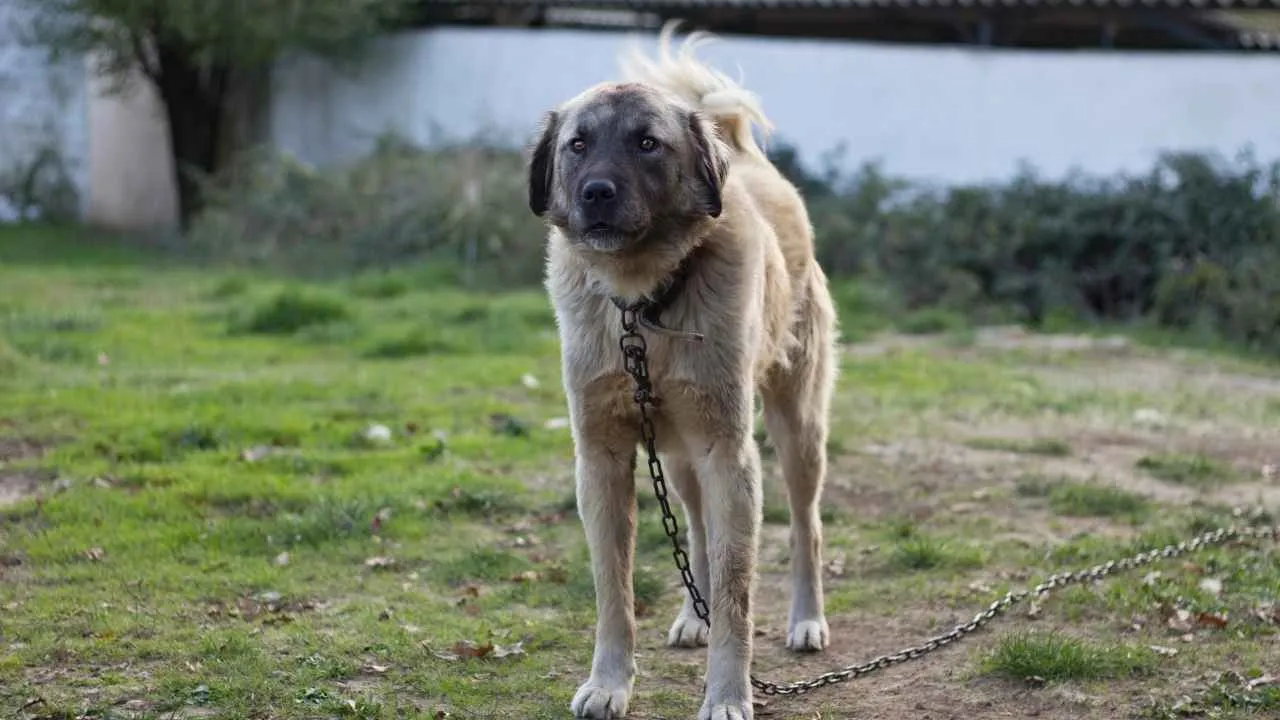
Kangals are known to scan their surroundings silently, identifying movement across wide distances before responding. Their presence is steady and observant rather than reactive. This makes them reliable on large rural properties where low visibility increases risks.
Physical Authority
With a deep chest, powerful frame, and remarkable bite force, they’re classified among the world’s most physically strong dogs. Their size alone discourages trespass, while their speed allows interception if threats approach livestock or property.
Temperament in Practice
The Kangal’s strong-willed nature is paired with clear judgment, helping it distinguish between real threats and distractions. It doesn’t waste energy on constant barking, reserving its response for when proximity becomes unsafe. Controlled behavior like this is vital in remote setups.
Balance Through Exposure
Their instincts remain sharp when they’re introduced to daily structure and new environments during early socialisation. This helps refine their reactions to guests, family, or farm equipment. Without this exposure, their guarding drive can become difficult to manage.
6. Australian Cattle Dog
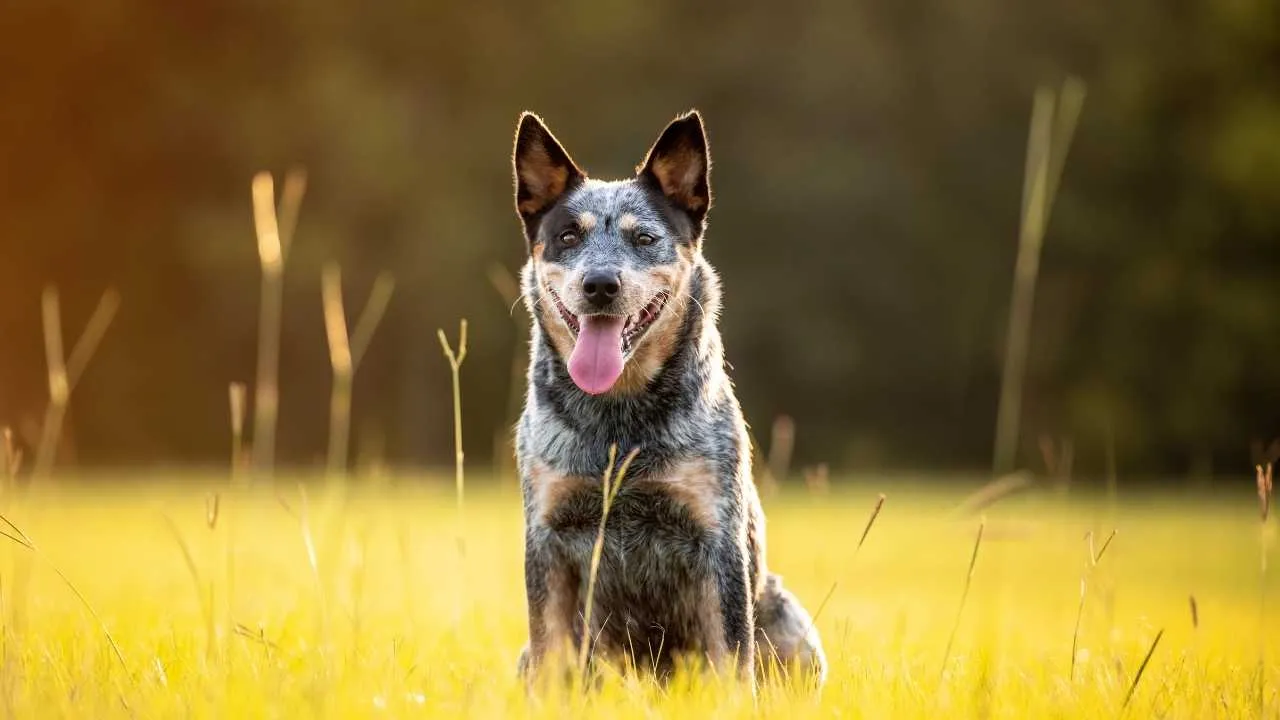
This breed thrives when given purpose and direction, especially in environments that demand frequent movement and alertness. They’re known for circling properties, checking blind spots, and reacting to unfamiliar sound patterns. It’s their habit of staying active that makes them effective without constant supervision.
Agility Over Size
While not built like large dogs, their quick bursts of speed and bite pressure allow them to hold off threats. Their compact muscles and sharp turning ability give them an edge in tight spaces or uneven terrain. This agility helps them block or herd unfamiliar animals without retreat.
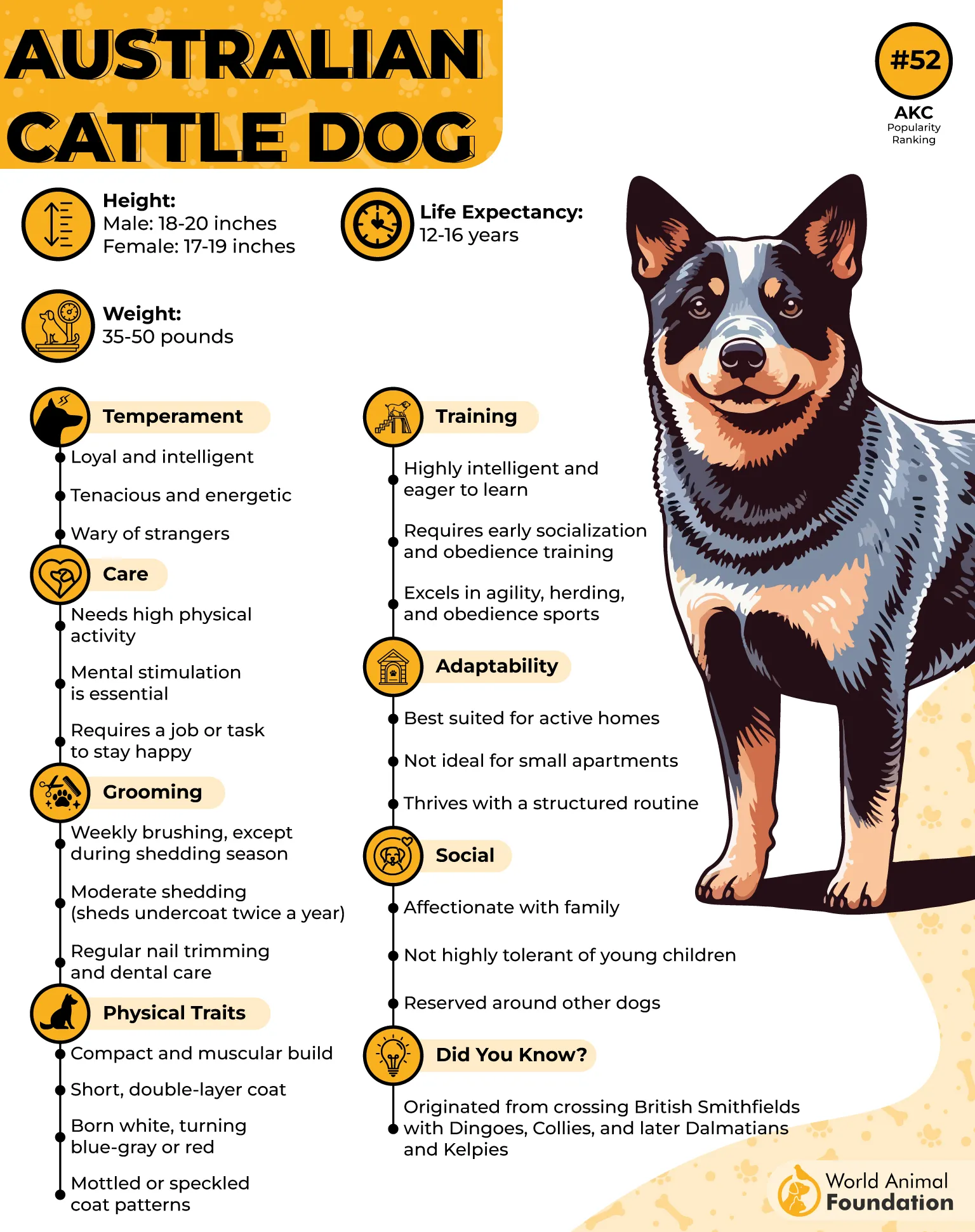
Mental Stimulation is Critical
Without regular stimulation, they can develop behavioral issues that result in property damage or over-alertness, as mentioned in Vets Love Pets. Remote areas with unpredictable wildlife or vehicle noise present unique challenges for this breed. They do best where they can anticipate change and respond physically.
Bonds Built on Work
The Australian Cattle Dog is known for selecting a small circle of trusted family members and staying deeply loyal to them. Once bonded, they’ll position themselves nearby, especially during outdoor chores. This built-in watchfulness adds a layer of security without needing constant interaction.
7. Maremma Sheepdog

Maremmas have a deeply ingrained instinct to patrol land boundaries without needing human cues. They’re calm during the day but become increasingly alert at dusk. Their decision to act is based on pattern recognition and environmental familiarity.
Physical Presence and Strength
This breed is large-boned and solid, often weighing over 85 pounds, with the endurance to walk miles daily. Its thick white coat insulates during cold nights spent outdoors. When alarmed, its defensive stance and bark are immediate and firm.
Silent Observation Habits
They don’t chase without cause — instead, they observe until movement becomes suspicious or intrusive. Their patience helps reduce false alarms around livestock. This approach makes them dependable in rural areas with regular animal movement.
Bond With the Livestock
Maremmas are known to integrate closely with herds and view them as their responsibility. They form long-term behavioral bonds and intervene when a threat nears. Even in unfenced zones, they stick close to flocks and avoid wandering far from their post.
Conclusion
Living far from neighbors means relying on more than just tools and fences. You need a dog that understands space, watches patterns, and reacts when it matters. These breeds aren’t just companions—they’re reliable workers with a long history of protecting land and life.
From gentle giants like the Maremma to focused breeds like the Kuvasz, each one brings something different to the table. Even with minimal training, their territorial nature guides their choices.
While some aren’t ideal for first-time dog owners, others adjust quickly and stay focused. Whether you need an excellent guard dog or a steady farm dog, these breeds prove their worth daily with quiet confidence.


